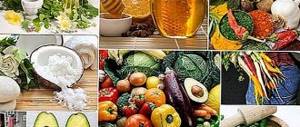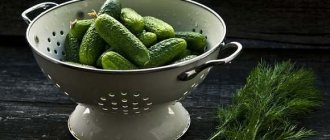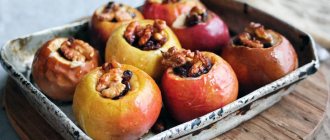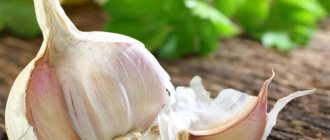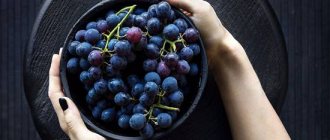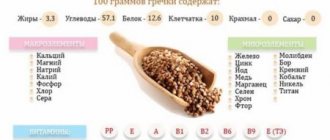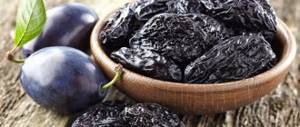Beneficial properties of beans
This legume, native to Central and South America, is considered a wonderful anti-aging agent. Beans are grown all over the world, including in our country. The plant's rapid adaptation to environmental conditions led to the development of numerous varieties of beans. Like soybeans, beans contain a lot of vegetable protein, but their healing properties are somewhat different.
Young green beans are available for sale in the summer season; in winter, the vegetable is usually sold in canned form. However, dried beans are perfectly stored all year round, and you can use them to make porridges, use them in soups, etc.
Like soybeans, beans contain a lot of vegetable protein, but their healing properties are somewhat different.
Beans contain a lot of iron, calcium, potassium, vitamin C and some B vitamins, as well as fiber, which makes the vegetable a real medicine for the stomach. Fiber binds toxins, regulates digestion, helps with hypofunction of the pancreas and spleen, and improves blood circulation.
Dark, black and brown beans are used for kidney and bladder diseases, and green beans are used as dietary therapy for liver diseases. Beans help normalize the functioning of the cardiovascular system. Beans are rich in proteins and nucleic acids, which help rejuvenate the body, as well as manganese and molybdenum, which are important for metabolism.
The bean biocomplex helps reduce blood cholesterol levels in the shortest possible time: if you consume 100 g of dry beans (prepared in one way or another) daily, cholesterol levels will drop by 19% within 2 months. A wide variety of dishes are prepared from different varieties of beans. It is better to prepare salads, vegetable dishes, and soups from young green beans. These beans should not be stored for a long time, as they quickly lose their beneficial nutritional properties.
Green beans can be boiled or stewed for 10–15 minutes in salted water with the addition of vegetable oil (optional). However, excessive consumption of legumes can cause flatulence and diarrhea. This primarily applies to those whose bodies do not produce enzymes to break down the sugar substances alpha-galactosides.
Once in the intestines, these substances are attacked by bacteria, which produce gases. To eliminate unpleasant consequences, before cooking, soak dry beans in water for 4 hours, then change the water and cook the beans until soft. Nutritionists believe that regular consumption of beans and legumes will help improve their digestion over time.
Beans
Regular consumption of beans has a beneficial effect on the human body. And it doesn’t matter what kind it is - bean, red or white.
Beneficial properties and harm of red beans
People have known about the benefits of red beans for a long time. According to numerous sources, the first plants appeared in America and India. They were used in cooking, medicine and cosmetology. Legumes are very “popular” in Armenian, Georgian and Turkish cuisines.
Red beans are a rich source of B vitamins, with B6 being the most abundant. One hundred grams of legumes contains the daily requirement of fiber. They need to be included in your diet more often, because they contain all the components necessary for the normal functioning of the body: carotene, zinc, copper, sulfur, potassium, lysine, arginine, iron, tyrosine.
You won't gain weight from eating beans. Its calorie content is 95 kilocalories per 100 grams.
- Red beans have a positive effect on the human body at any age. Its regular use will strengthen the immune system, make the skin healthier and normalize the nervous system.
- Every day, eating one hundred grams of legumes will reduce the risk of malignant tumors and stabilize blood sugar levels. Beans also remove harmful toxins and are recommended for people with diabetes.
- This plant is designed to cleanse the body and remove excess uric acid.
- If you want to lose weight, be sure to include beans in your diet. In addition to being low in calories, it quickly makes you feel full. There are special bean diets designed for a period of seven days.
- Red beans are a powerful energy drink that gives you strength throughout the day. In this case, weight is not gained, since energy is consumed gradually.
- Beans are recommended for patients with gastrointestinal diseases. You can eat it as part of salads or just without anything. The main condition is to boil the product.
Important!
The product should not be eaten raw. This is fraught with poisoning due to the content of harmful substances inside the beans, which accumulate over time. Beans in medicine and cosmetology
Beans help with rheumatism, pancreatitis, bronchitis, and improve digestion. Doctors recommend it for anemia (too much iron), excess urine, and deposits in the kidneys. Legumes are no less important during pregnancy. They contain a lot of protein, which the expectant mother really needs at this time, as well as fiber, which eliminates constipation and indigestion.
The flour of the plant was used in ancient times to make white and powder. It nourishes the skin well and smoothes out wrinkles.
Mask for smoothing wrinkles and moisturizing the skin: wash the legumes, soak them for four to five hours, boil, and cool. Take half a lemon, squeeze the juice and add a spoonful of olive oil. Mix everything thoroughly. All! The mask is ready. You can apply it to your face for 15-20 minutes.
Harmful properties
As mentioned above, you should not eat beans raw. It needs to be cooked for at least ten minutes. Moreover, the less time left until the end of the shelf life, the longer it will take to do this. Legumes are also not indicated for elderly people, as well as those who have gastritis or peptic ulcers.
Beneficial properties and harm of green beans
Green beans began to be used as food much later than legumes. The Italians were the first to try it. They added the pods to various dishes. A special variety of leguminous fruits with a sweet and juicy taste was developed decades later. Today there are many varieties that are used for their intended purpose.
Green beans contain a lot of carotene, nicotinic and ascorbic acid, B vitamins, tocopherol, fiber and folic acid. Minerals include calcium, iron, magnesium, calcium, phosphorus, sulfur, and chromium. All of them are vital for any organism.
The peculiarity of legume fruits is the presence of easily digestible proteins and complex carbohydrates. The calorie content of the product is 25 kilocalories per 100 grams.
The benefit of beans is, first of all, that it does not absorb harmful impurities and toxins from the environment.
Thanks to a large amount of iron and sulfur, beans effectively “fight” intestinal bacteria and improve immunity by saturating cells with oxygen. Regular consumption relieves rheumatism, skin diseases and even bronchitis.
Doctors recommend including vegetables in people's diets during epidemics. This should be done once or twice a week. The substances they contain actively “fight” the flu, activate the process of hemoglobin production and normalize carbohydrate metabolism.
According to doctors, legumes will help alleviate the condition of atherosclerosis, arrhythmia, hypertension, urolithiasis, and pyelonephritis.
Scientists have conducted a number of studies in which it was found that green beans can restore hormonal levels, cure anemia, calm the nervous system, improve the functioning of the liver and heart muscle, strengthen blood vessels and have a positive effect on the functioning of the gastrointestinal tract.
Arginine, which is in the composition, lowers blood sugar levels, so diabetics can eat beans. This product is included in the menu of patients with oncology and tuberculosis. Some individual doctors claim that the pod fruit can even restore the sexual function of men, not to mention preventing the development of prostate adenoma.
Harm
It is not recommended to eat green beans for people who have gastritis, stomach ulcers, high acidity, gout, cholecystitis. It is also contraindicated for elderly people who have problems with intestinal function.
Beneficial properties and harm of white beans
Compound:
- Proteins – 21 grams;
- Fats – 2 grams;
- Carbohydrates – 45 grams.
Calorie content - 290 kilocalories.
- White beans are an order of magnitude superior to many other vegetables in terms of the amount of useful vitamins and minerals. The protein contained in the product is quickly absorbed by the body.
- Beans are indicated for rheumatism, kidney stones, pancreatitis, eczema and ulcers. It has a diuretic, antimicrobial effect, and can lower blood sugar levels.
- Since white beans contain a lot of potassium, they are prescribed to patients with heart rhythm disturbances and atherosclerosis.
- The fruits contain a lot of calcium and potassium, which means that there will be no problems with tooth enamel and bones if they are consumed regularly.
Harm
White beans contain purines, so it is better not to eat them for older people with nephritis and gout. It is also worth abandoning it in case of pancreatitis, cholecystitis, peptic ulcer, colitis.
The beans need to be cooked. This is a must. You can make many nutritious and delicious dishes from it. In this case, for better cooking, you need to drain the water immediately after boiling and pour a new one into the pan, adding three tablespoons of vegetable oil. Food should only be salted after cooking. Do not stir the beans while cooking.
How to choose canned beans
Canning does not harm the beans at all; all the beneficial properties remain in them. However, today many manufacturers, in order to save money, supply store shelves with anything but a low-quality product.
So, pay attention to the composition indicated on the can. Ideally, there should be nothing inside it except beans, water, salt and sugar.
Some manufacturers use aspartame instead of sugar, which is still abundant in “orbit” chewing gum. It is several times sweeter than sugar, so carefully study the composition.
At home, pay attention to the contents of the jar. Legumes should be uniform in color and smooth. Their size should be small.
This is interesting: the larger the beans, the poorer their quality. The exception is black beans.
When buying a product in a tin can, pay attention to its integrity: there should be no dents or other damage. The inscription “expiration date” should be clearly visible. If you purchase beans in a glass jar, pay attention to the tightness of the lid and the absence of chips on the bottom.
There are about two hundred varieties of beans; this article discusses only the three most common ones.
pitanie-plus.com
Is it possible to eat beans for gastritis?
Beans contain many vitamins and microelements necessary for the human body. First of all, the benefits of beans are explained by the content of a large amount of proteins and amino acids, which are important for maintaining the health of the body as a whole. It is allowed to include beans and green beans in the menu for gastritis. Dishes made from it are indicated for this disease, since they do not overload the digestive organ and do not irritate it.
But at the same time, certain restrictions on use for various forms of gastritis exist. Therefore, the answer to whether you can eat beans with gastritis or not cannot be unambiguous. But since there are no strict prohibitions, you should listen to your own feelings when consuming it.
Green beans against the background of gastritis with low acidity are especially useful, as they can improve secretory function. This form of the disease leads to the fact that the absorption of nutrients in the stomach during the digestion of food is significantly deteriorated.
It is allowed to include green beans in the menu for gastritis as they do not overload the digestive organ and do not have an irritating effect on it
As a result, patients may experience anemia and develop vitamin deficiency. Thanks to green beans in the diet, you can fight such pathologies and significantly improve the condition of a person suffering from gastritis. Puree soup from this bean can be eaten even in the subacute stage of gastritis.
Secrets of cooking beans for gastritis
To combat flatulence, add thyme and mint to the beans before cooking - they will relieve the intestines of gases and give the dish a fragrant aroma. If you want the overt bean taste to go away from the beans, be sure to soak them for 8-12 hours before cooking. After this, it is recommended to drain the water and cook the beans in new water, otherwise the cooking time will stretch to infinity, and the beans will lose their delicate nutty notes.
Take your time, cook the beans over low heat. After boiling, experienced housewives change the water again and add a little vegetable oil to it to soften the taste. Salt the beans only at the end of cooking, otherwise they will turn out too tough. To make the beans cook faster, add 1 tbsp to them every 10 minutes. spoon of cold water. Do not cover the beans with a lid when cooking, and then they will retain their bright, rich color.
The best way to consume beans for patients with low stomach acidity who are in remission is puree
Bean puree for patients with gastritis
The best way to prepare this product for patients with low stomach acidity who are in remission is to puree it. The plant protein found in beans is very close in composition to the animal protein found in meat, eggs, and fish. In addition, it contains many mineral compounds, amino acids, and vitamins that are important for the body, which are simply necessary to support a patient with gastritis. It also has all the necessary substances for complete human nutrition.
The recipe for making dry bean puree is very simple and quick. The only thing required is to soak it overnight. In the morning, it is simply boiled until completely softened along with finely chopped carrots. The water can be salted, but only slightly.
When the dish is cooked, transfer it to a bowl and grind it using a blender or masher until the consistency is thin and completely homogeneous. This is very important for a patient with gastritis. You can also add boiled pumpkin to it. It is also useful for patients suffering from gastrointestinal diseases. The only thing to remember is that all dietary dishes recommended for consumption for stomach diseases should be consumed only after consulting with your doctor.
Proper cooking
For gastritis, it is recommended to cook beans at home. Store-bought canned beans contain preservatives and are processed with sodium. This is especially dangerous for gastritis with high acidity.
To make the beans cook faster, they must first be filled with water. After the fruits swell, they are boiled until tender. At the same time, different varieties require different cooking times.
Green beans can increase gas production. To minimize this effect, it is also recommended to soak it in water, then boil it, and when consuming, add fresh dill.
Bean selection
When choosing green beans, you must pay attention to its type. This is very important, since low-quality legumes, without complying with the necessary storage requirements, can be harmful. Low-quality green beans can be especially dangerous for gastritis with high acidity. Basic selection rules:
- Smooth surface of the pods and uniform green color (sometimes yellow varieties are found).
- No stains or damage.
- A clear crunching sound when breaking the pod.
- There should not be a lot of ice in the package with frozen pods.
Advice! All varieties of beans are allowed to be eaten with gastritis. But the beans must be absolutely smooth without any signs of damage.
Conventionally, bean varieties can be classified by color:
- Red contains the largest amount of antioxidants and valuable amino acids. It is this variety that is most capable of slowing down the aging process.
- White is the best choice for making purees. The beans cook quickly and are very easy to cook. They contain large amounts of magnesium, calcium and fluoride.
- Black contains the largest amount of vitamins and nutrients. Experts say that it improves brain function, cleans blood vessels from cholesterol plaques and improves overall immunity.
Bean puree
If you have diseases of the digestive system, you can diversify your diet by using bean puree. For this dish, the beans are boiled until they begin to crumble.
This usually takes a lot of time. But if you soak the fruits overnight, this will significantly reduce the cooking time. The recipe for making puree provides for the additional inclusion of carrots. The vegetable is cut into cubes and boiled together with beans.
Cooked beans and carrots are cooled and pureed using a blender or masher. It is desirable that the consistency of the resulting dish is homogeneous and not thick. To do this, while blending with a blender, gradually add the required amount of broth in which the vegetables were cooked. You can use pumpkin instead of carrots.
Is it possible to eat green beans if you have gastritis?
Is it possible to eat green beans for gastritis, as well as about regular beans, this problem arises quite often. The fact is that it itself has a considerable number of useful properties, and has also simply found quite wide application in the field of cooking. You especially need to pay attention to its composition, which contains all the essential vitamins and microelements necessary for the human body. It is also worth mentioning the antimicrobial, wound-healing and antibacterial effects of beans.
But the fact is that beans, which belong to the legume family, can therefore contribute to the formation of gases in the intestines. Therefore, it is used with caution for gastritis. Usually, beans for gastritis are allowed in cases where the disease occurs against the background of low acidity in the stomach.
Multiple medical studies have proven that pureed beans effectively increase the acidity of the juice in the stomach.
Green beans for gastritis should be eaten exclusively in boiled and additionally crushed form.
Beans are definitely not allowed on the menu of patients during an exacerbation of gastritis, since the gas formation caused by it prevents the rapid restoration of the mucous membrane in the stomach.
Green beans for gastritis somewhat enhance the secretory function in the stomach. In addition, it effectively calms the nervous system and also acts as an antidepressant. Among other things, green beans are known for their pronounced restorative effect on the body as a whole, and also simply improve digestive function, which is especially important for gastritis.
The main thing to remember is that green beans for gastritis should be eaten exclusively in cooked and additionally chopped form. The reason for this ban lies in the fact that raw beans can significantly disrupt the functioning of the entire gastrointestinal tract as a whole, which is extremely undesirable.
For those people who develop gastritis as a type of low acidity, beans will be very useful, and the best option for preparing them is puree. In this case, the vegetable protein found in the beans enters the human body. But it is very similar in composition to animal protein, which is found in meat and fish.
What vegetables are possible for gastritis: what and in what form to eat
It is important to know! Bad breath is often caused by parasites! To check if you have parasites, add 1 spoon to a glass of water... Read more
Inflammation of the gastric mucosa develops as a result of the influence of many factors (infectious, nutritional, toxic, neuro-endocrine, etc.).
For treatment, in addition to medication and physiotherapeutic methods of treatment, a diet based on the exclusion of foods harmful to the stomach and the appointment of healthy ones is of great importance. The latter include fermented milk products, cereals, fruits, lean meats, and fish. Vegetables are of particular importance.
To correctly create a therapeutic diet, you need to consult with a specialist who will explain what vegetables are suitable for gastritis, how to prepare them correctly and when is the best time to consume them.
The benefits and harms of vegetables for gastritis
Vegetables are part of most diets because they contain many beneficial substances necessary for the normal functioning of organs and systems.
The nutritional value of vegetables for gastritis is determined by the presence of the following substances in their composition:
- Vitamins necessary for all cellular and tissue metabolic processes, including restoration of damaged mucous membranes
- Minerals that promote the formation of alkaline compounds, which ensures the normalization of acid-base balance,
- Organic acids that have antimicrobial, antiseptic effects, activation of the secretory activity of the gastric mucosa.
- Plant fiber that helps normalize the motor function of the digestive tract.
Due to the different ratio of all components in vegetables, some of them should be excluded from the diet during an exacerbation of the disease, others are allowed only during a certain phase of inflammation, and others can be eaten almost without restrictions.
The effect of vegetables on different types of diseases
Vegetables are useful for a patient with any type of inflammation of the stomach wall - with increased or decreased production of hydrochloric acid.
If the secretion of gastric juice is increased, the therapeutic effect is aimed at reducing the concentration of acid inside the stomach, which damages the mucous layer.
If acidity is reduced, then the purpose of the diet is to normalize secretory activity and the rate of food digestion.
The diet is necessarily prescribed during acute inflammation and exacerbation of a chronic pathological condition.
The same vegetable can be used in preparing dishes for different types of pathology; you just need to follow the rules for its use.
Potato
This root vegetable is allowed for consumption during any pathology. If acidity is increased, you can drink potato juice, which has an anti-inflammatory, calming effect on the epithelial wall. At the time of exacerbation, it is recommended to take this remedy 1 tablespoon on an empty stomach three times a day. The course of such treatment is at least 10 days.
Potatoes can be eaten baked, boiled, or added to vegetable stews for gastritis. You cannot fry it, like any other food, during stomach inflammation.
Pumpkin
This vegetable is one of the healthiest. Pumpkin can be eaten for any gastritis, especially if the formation of gastric juice is increased. It is recommended to drink pumpkin juice, cook porridge, make casseroles with pumpkin for gastritis, or prepare desserts.
Beet
In case of hyperacid gastritis, beets can only be consumed by heat treatment: boiled, steamed. It should be boiled in its peel for no longer than 15 minutes to preserve all the beneficial substances. You can eat boiled beets if you have gastritis, because they have an anti-inflammatory and analgesic effect.
In addition, beets for gastritis have a wound-healing effect and prevent the appearance of malignant neoplasms. During exacerbation of gastritis, you should not add garlic to the boiled beet salad, which has an irritating effect on the mucous membrane.
Onion
During gastritis, onions can only be eaten in heat-treated form, since fresh, due to the large amount of acids, it irritates the stomach. Fresh onions, especially green onions, are strictly prohibited if erosions form on the epithelium of the stomach.
Boiled onions for gastritis can be consumed as part of soup, added to various salads. It normalizes secretory activity and improves appetite. For gastritis, you don’t even need to cook the onion, but simply put it in boiling water for a while and then add it to different dishes.
Celery
For hyperacid gastritis, fresh celery is not recommended, because it enhances the secretory activity of the gastric epithelium even more.
If you have gastritis with low acid secretion, you can eat celery boiled, steamed, as part of soups and salads.
This vegetable helps to activate the motor function of the gastrointestinal tract and the production of digestive juice, which speeds up the digestion process.
Zucchini
This vegetable is allowed for nutrition during many diseases of the digestive tract. For gastritis, zucchini is consumed as part of vegetable stew, as well as in any other heat-treated form. As for such a common dish as squash caviar, it can only be consumed during remission.
To prepare caviar from zucchini, a sick person should not use preservatives (vinegar). It is not recommended to eat store-bought squash caviar for gastritis.
Legumes
In general, these vegetables should be used with caution for the treatment of diseases of the gastrointestinal tract, because they significantly enhance the peristalsis of organs and can provoke increased gas formation and the appearance of cramping abdominal pain. But there are also exceptions. It is sometimes allowed, if the acidity is reduced, to cook dishes with the addition of beans and peas.
For gastritis, you can eat green beans in boiled, crushed form. Beans have an antibacterial and wound-healing effect. As for peas, you can make puree soup from them.
Corn
For gastritis, corn can be consumed boiled or steamed. During an exacerbation of inflammatory diseases of the stomach, the consumption of meat should be avoided, since its breakdown in the body at this time is difficult, and corn during gastritis allows you to replenish the body's protein needs without harming the epithelial lining of the gastrointestinal tract.
Carrot
This root vegetable consists of a huge amount of vitamins and microelements, which allows it to be used in many therapeutic diets. A particularly important ingredient is vitamin A, which is needed for the regeneration of mucous membranes.
Fresh carrots are allowed to be eaten for gastritis, accompanied by reduced secretion of acid and digestive enzymes. Boiled or stewed carrots can be eaten at any stage of inflammatory changes in epithelial tissues.
Spinach, lettuce, greens
Due to the increased content of oxalic acid in fresh spinach, in case of gastritis with high acidity it cannot be eaten, but for the treatment of the hypoacid variety of the disease, on the contrary, it is recommended by doctors. Vegetable dishes with stewed, steamed spinach are considered especially healthy. As for green salad leaves, they can be eaten fresh for gastritis.
You can learn about how to eat and what to exclude from your diet in this video.
Radish, radish
In case of exacerbation of any gastritis, radishes and radishes are prohibited, since, despite the large amount of vitamins, microelements and essential oils, consuming these vegetables in conditions of hyperacidity and inflammation of the stomach wall can aggravate the situation.
Tips from our readers
I got rid of parasites in just a week! I was helped by a remedy that I learned about from an interview with a parasitologist...
Read the expert's opinion >>
bell pepper
This vegetable is not recommended for consumption raw if the secretion of hydrochloric acid is increased. Heat-treated bell peppers are allowed for any gastritis.
Cooking methods
To speed up the healing of the damaged epithelial layer of the stomach wall, a diet is prescribed that involves eating soft, non-fibrous foods. Fresh vegetables are often excluded from the diet for gastritis. It is recommended to boil, bake, or mash them. Lean vegetable broths and stewed vegetables are useful for gastritis.
As for fried, smoked, salted, pickled, canned store-bought products, for example, canned beans, they are not allowed for gastritis with any type of secretory activity.
Source: https://GastrituNet.online/bolezni-zheludka/gastrit/lechenie-g/dieta/kakie-ovoshhi-mozhno-pri-gastrite.html
Gastritis and green beans
Green beans for gastritis can be consumed both raw and boiled. Different types of gastritis impose their own restrictions on consumption. So, for gastritis with high acidity, you can eat fresh green beans, and they are more preferable.
But with low acidity, atrophic gastritis, when some of the glands are destroyed and there is not enough gastric juice, it is better to eat ripened boiled grains. However, there are still no strict prohibitions for any type of gastritis, so listen to your body in these matters. And, of course, to your doctor too.
Green beans have one very important feature, which is of key importance for gastritis diseases. This is a large amount of protein (which vegetables usually cannot boast of), which, in addition, is very easily digestible. The bean variety is rich in easily digestible proteins and complex (healthy) carbohydrates, which even a sick stomach can handle perfectly!
Green beans in folk recipes for gastritis:
- Pour the washed bean pods with water at room temperature: place on high heat, boil, reduce the heat and leave for a while until half of the water in the container has boiled away. The remaining liquid should be cooled and drunk before meals, a teaspoon at a time. If a person notes that he likes the result, the dose can be increased by 2–3 times;
- Dried bean pods should be poured with boiling water and left for half a day in a thermos: then filter the liquid using gauze. The decoction is ready. The method of application is the same as in the previous recipe;
- Brew a specially prepared mixture of herbs - beans, nettles, blueberry leaves, dandelion root: leave for two days in a cool, dark place. Strain and consume pure or add the infusion to food;
- Chinese recipe: Mix oats, green beans and barley. Brew it and let it brew for a day. Carefully strain the resulting infusion through cheesecloth. Take a tablespoon in the morning.
What should you not eat?
With increased and decreased acidity of the stomach, with acute and chronic gastritis, it is necessary to make it a rule to limit and prohibit the consumption of such foods and dishes:
- White wheat bread, buns.
- Some types of coarse cereals (barley, millet, legumes - beans, peas) and muesli. Beans and peas should not be eaten only in their whole form.
- Rich meat and fish broth, soup with added mushrooms, jellied meat.
- Fatty meats, fatty lard, smoked sausage, raw sausages, beef liver and other offal.
- Salted and marinated fish, canned meat and fish.
- Milk and some dairy products (homemade sour cream and cottage cheese, cheese).
- Such vegetables are radishes (in case of exacerbation of the disease), sorrel, radish, onions and garlic. Sorrel is not recommended only for gastritis with high acidity.
- Confectionery - chocolate, cakes, butter cookies, and other variety of sweets.
- Fresh fruits - melon, grapes; sour berries.
- Harmful carbonated drinks - kvass, beer; Tea with lemon; tap water.
- Spicy and salty spices, mayonnaise and sauces.
- Raw and fried eggs.
Return to contents
Recipe for cooking green beans for gastritis
The popularity of green bean dishes is increasing every day. And this is not surprising, because this product has a lot of useful properties. It is important to note that due to the high fiber content, bloating and abdominal discomfort may occur after eating green beans. Therefore, people with gastritis, ulcers and other stomach diseases should consume the vegetable with caution.
Delicious recipe for green beans as a side dish for gastritis
To prepare a tasty and quick side dish we will need: one kg of green beans; one carrot; one small onion; 50 grams of cheese, preferably hard; 2.5 tablespoons of sour cream (non-fat); 2 tablespoons breadcrumbs; salt to taste.
Wash the beans, cut off the ends (if the pods are young, you don’t have to cut them), cut into small pods. Place in a saucepan with cold water, after boiling, cook for no more than 5 minutes.
People with gastritis, ulcers and other stomach diseases should use the vegetable with caution.
Wash and peel the carrots and onions thoroughly. Cut the onion into small half rings, grate the carrots. Add onion to heated oil in a frying pan, sauté lightly and add carrots, fry until golden brown. Add boiled beans and sour cream to the pan with vegetables, mix everything and leave for 15 minutes, then add breadcrumbs and mix again. Place the dish on a plate and sprinkle with grated cheese.
Green beans as a separate dish for gastritis
Steam green beans for five to seven minutes. Then sprinkle with oregano, thyme and fresh basil, and salt and pepper to taste. Season with a little olive oil.
Unripe green beans are not recommended for gastritis with low acidity, gastric ulcer, cholecystitis, it is not advisable for people who are prone to flatulence. To avoid flatulence, dill or caraway seeds are added to the bean dish. These spices are good for eliminating rumbling and bloating.
Is it possible to eat cauliflower if you have pancreatitis?
Treatment of pancreatitis is always accompanied by adherence to a strict diet. The difficulty of creating a daily menu is that it must include not only safe, but also healthy products.
To restore the functioning of the digestive system, various microelements and vitamins are no less important; at the same time, food should not contain fiber and coarse fibers, which are difficult to digest by the gastrointestinal tract.
Nutritionists allow adding cauliflower to the diet if the pancreas malfunctions only after special cooking and as part of other dishes. To prevent this vegetable from leading to intestinal overload, a certain dosage must be observed.
Benefits of cauliflower
When diagnosing pancreatitis, adherence to a certain diet is inevitable. In the acute phase, it is very important to reduce the load on the pancreas. In this regard, the patient’s diet should include easily digestible foods with low fiber content.
Many patients doubt whether it is possible to eat cabbage with pancreatitis, as they assume that such a vegetable can cause painful flatulence in the intestines. But, as it turned out, this opinion is considered erroneous, and there is reasoned confirmation of this.
Cauliflower is quite often included in dishes that are recommended for pancreatitis, gastritis, liver damage, and peptic ulcers. This vegetable is a supplier of vitamins A and C, contains large amounts of iron, potassium, magnesium, as well as various acids and pectin. Cauliflower also contains valuable vitamin U, which:
- neutralizes toxins and reduces their levels in the body;
- normalizes acidity levels;
- activates metabolic processes;
- reduces the likelihood of constipation.
In addition, scientists have proven the antitumor effect of cauliflower, as well as its participation in reducing cholesterol levels in blood vessels.
In what form can the vegetable be consumed?
Cauliflower for pancreatitis should be consumed in strictly limited quantities and only after heat treatment. Nutritionists do not recommend eating this vegetable as a separate dish. Cauliflower should be added to soups, casseroles, and vegetable stews in a puree form.
In case of chronic pancreatitis or during an exacerbation of the disease, the vegetable should be introduced into the diet in small doses. It is important to carefully monitor the body’s reaction. There are cases when the patient experiences colic, bloating and nausea. If such symptoms appear, cauliflower should be immediately excluded from the diet.
The daily intake of cauliflower should be no more than 100 g, and we are talking only about boiled vegetables.
Fried and baked cabbage is not allowed to be consumed if the functionality of the pancreas is impaired. Quite often, cauliflower is steamed.
This cooking method allows you to preserve maximum nutrients in the product. Also, during steam treatment, the amount of essential oil decreases.
Recipes for pancreatitis
In dietary cooking, you can use fresh or frozen cabbage. When choosing a vegetable, you should give preference to white inflorescences. If there are black specks on the vegetable, this indicates that the cabbage has been stored for a long time and may have lost a number of useful microelements.
Before cooking the head of cabbage, small inflorescences are disassembled. To give the product a whiter color, add a little sugar to the boiling water. Young heads of cabbage are cooked for no more than 10-15 minutes. The finished product should be easy to prick with a fork.
Cauliflower soup with chicken
This dish is high in protein, has a delicate consistency and is easily digestible by the gastrointestinal tract.
https://www.youtube.com/watch?v=hFiVnMmBoLQ
To prepare the soup you will need:
- chicken breast – 0.5 kg;
- potatoes – 2 pcs.;
- carrots – 1 pc.;
- cauliflower – 6 large inflorescences;
- salt.
First of all, you need to cook the chicken meat. To do this, fill the breast with water and place it on the stove. After the broth boils, you need to drain it, rinse the meat, add cold water again and boil. After 30 minutes, the meat must be removed from the broth and minced twice.
Add prepared vegetables to the hot broth, add salt and cook until fully cooked. The ratio of vegetable mass and water should be the same. After all the ingredients become soft, they need to be cooled a little and blended with a blender. Add minced chicken to the resulting mass. Before serving, add a little sour cream to the serving.
Cauliflower Casserole
This recipe is quite easy to prepare and contains only approved ingredients. To prepare it you will need:
- cauliflower – 300 g;
- carrots – 1 pc.;
- wheat crackers – 15-20 g;
- milk – 50 ml;
- egg – 1 pc.;
- a little hard cheese;
- butter – 5 g.
Cauliflower inflorescences need to be boiled in salted water. Then the vegetable needs to be cut into small pieces. Next, you need to boil the carrots in the remaining broth and then grate them on a coarse grater. Soak wheat crackers in milk.
To prepare the filling, you need to beat the white and grind the yolk with butter. Then combine the ingredients and add grated cheese to the mixture. Salt the mixture to taste.
Mix the vegetables with the soaked breadcrumbs and spread the whole mass on a baking sheet with high sides. Then pour the egg mixture over the dish and place in the oven for 20 minutes. The baking temperature should be no more than 200⁰C.
Cabbage puree
Puree-based foods are especially beneficial for pancreatitis, especially if they are made from vegetables. To prepare cabbage puree you will need:
- a glass of vegetable broth;
- 125 ml milk;
- egg yolk;
- 0.5 kg cauliflower;
- salt;
- 2 tbsp. l. butter;
- 1 tbsp. l. flour.
Cauliflower inflorescences are boiled in salted water. After which the vegetables are placed in a colander, and after the excess water has drained, they are pureed.
Wheat flour needs to be dried a little in a hot frying pan, but the color of the product should not change. Then the prepared flour is diluted with milk and vegetable broth and cooked for 5-7 minutes.
At the end of cooking, the milk sauce is combined with cabbage puree, and butter and whipped yolk are added to the mixture. The puree should be consumed only warm.
When diagnosing pancreatitis, cauliflower is allowed to be eaten only in boiled form. This vegetable is well absorbed by the body, does not overload the pancreas and is a supplier of useful microelements and vitamins, which are very important during the recovery period.
Source: https://GormonOff.com/pitanie/mozhno-li-est-cvetnuyu-kapustu-pri-pankreatite
How to use for various types of illness
Increased acidity
For different forms of gastritis, the diet is different. The most limited diet is for patients with hyperacid gastritis - due to the high acid content in the stomach, foods that stimulate its production are contraindicated. Therefore, it is not recommended to include fresh vegetables in the menu, which act as a catalyst for digestive processes.
There is a little trick for such patients - in order to easily consume the product, it needs to be boiled. Heat treatment will help the vegetable get rid of its aggressive properties, and it can be used.
Therefore, with high acidity, fresh cabbage salad is a forbidden dish, but dietary cabbage soup and borscht are very welcome.
The exception in this case is cauliflower. It has a soft structure, contains less fiber and protein, so it can be used as a side dish even for gastritis with high acidity. But not raw, but boiled – stewed – baked.
Rule . With hyperacid gastritis, raw cabbage of any kind cannot be included in the menu.
Normal acidity
Kohlrabi, cauliflower, white cabbage, broccoli for gastritis with normal acidity are not prohibited. Only the raw product should be treated with caution. The patient should always focus on his own well-being.
If you really want fresh cabbage , you can afford it, but in small quantities and at lunchtime. Afterwards, you need to monitor your well-being - if pain does not appear, gas formation does not increase, the dish is allowed to you. True, no more than once a week.
The thermally processed product can be consumed more often, up to 4-5 times a week, in an amount of 200 grams per serving.
Pay special attention to seaweed In fact, it is not a vegetable, but algae. It is better not to purchase or consume pickled salads. Laminaria is sold in dry form; it is advisable to purchase it to feed a patient with gastritis.
Interesting! Laminaria is capable of accumulating not only useful, but also harmful substances. Therefore, it matters in which ecological region it was harvested.
Low acidity
It would seem that there is freedom here! There is little acid in the stomach, and the vegetable stimulates its production, you can eat and be happy. However, due to the coarse fibers of the fiber, you will have to be careful.
- white cabbage can only be consumed heat-treated or pickled.
- Kelp is allowed to be consumed, with the exception of pickled one.
- Broccoli and cauliflower should be used as a side dish or as a meal on their own for dinner.
- Chinese cabbage can only be used in stewed form. No more than 2 - 3 times a week.
- Brussels sprouts can be eaten as a raw salad, separated into leaves.
- Kohlrabi can be used raw, after chopping it on a grater.
Diet menu for gastritis with high acidity (Diet)
If during an exacerbation, due to many restrictions, the menu is very monotonous, then during the recovery period it can be expanded and diversified. This is a physiologically complete diet that you can stick to for a long time. And expanding the list of permitted vegetables, cereals, meat and fish dishes allows you to make your diet more varied.
| Breakfast |
|
| Lunch |
|
| Dinner |
|
| Afternoon snack |
|
| Dinner |
|
| For the night |
|
| Breakfast |
|
| Lunch |
|
| Dinner |
|
| Afternoon snack |
|
| Dinner |
|
| For the night |
|
| Breakfast |
|
| Lunch |
|
| Dinner |
|
| Afternoon snack |
|
| Dinner |
|
| For the night |
|
Cauliflower juice is a folk remedy for gastritis
Traditional medicine recommends using fresh cauliflower juice as a medicine for the treatment of gastritis (due to low acidity). This is due to the beneficial qualities of this plant and its high content of vitamins.
To make fresh cauliflower juice, you need a juicer. In this case, it will turn out clean and without pulp. Although you can get such healing juice using a regular meat grinder or grater. To do this you need:
- disassemble a head of cauliflower into inflorescences;
- rinse them;
- give them time to dry;
- pass them through a meat grinder several times or grate them;
- Squeeze the resulting pulp through a piece of gauze.
This way you can get fresh cauliflower juice. But it will be quite concentrated and unpleasant to the taste. To improve its taste, nutritionists advise adding to it:
- honey;
- cinnamon;
- fresh juice of other vegetables (for example, tomatoes, cucumbers, carrots, beets);
- fresh fruit juice - oranges, pears, apples.
This mixture will also be healing, but you should consult your gastroenterologist about adding additional components to cabbage juice.
Gastritis is a common disease. It occurs due to poor diet, alcohol abuse and Helicobacter pylori infection. When sick, the gastric mucosa suffers from inflammatory processes and reacts painfully to food, causing pain, nausea, and heartburn. For gastritis, follow a gentle diet to restore the functions of the digestive tract.
There is no shortage of goods on the market; every family has different dishes on their tables, including dishes made from different types of cabbage - cauliflower, Peking cabbage, sea cabbage. It is difficult for a person who is accustomed to eating such foods to give up their usual food while following a therapeutic diet. Let’s look in detail at whether it is permissible to eat cabbage for gastritis.
What foods does the diet include for exacerbation of gastritis?
- Meat dishes are allowed only boiled or steamed. Meat of veal, beef, chicken, turkey is cleaned of veins, fat, skin, boiled, then passed through a meat grinder several times or crushed in a blender. Eat once a day in the form of puree or soufflé.
- Also, the diet for acute gastritis includes porridge made from semolina, buckwheat, oatmeal, and rice, cooked in water, milk and seasoned with butter.
- Soups should have a slimy consistency.
- Low-fat fish, served as a soufflé or puree.
- Low-fat pureed cottage cheese, milk, cream.
- Eggs in the form of a steam omelet.
- Milk jelly, honey, fruit jelly, sugar, fruit jelly.
- Weak tea, still water, milk.
Cauliflower and its benefits for gastritis
Experts believe that a vegetable such as cauliflower adds variety to the dietary menu, compiled specifically for sick people suffering from gastritis. This is directly related to its chemical composition, which is distinguished by its richness of nutrients and beneficial substances:
- vitamins – C, B1, B2, B6, PP, A;
- microelements – sodium, potassium, calcium, magnesium, phosphorus, iron;
- sugars;
- starch;
- fiber;
- raw protein;
- fat
Among the many beneficial properties of this vegetable, gastroenterologists highlight the following:
- Accelerates the regeneration of damaged areas of the gastric mucosa.
- Restores metabolic processes in the patient's body.
- Increases immunity.
For gastritis, this type of cabbage is included in the diet menu because it is absorbed much better than other varieties of this plant. This benefit is due to its fine cellular structure, which results in less coarse fiber.
And with easy digestion of a properly prepared cabbage dish, the gastric mucosa, inflamed due to gastritis, is less irritated.
General recommendations
Regardless of the form of the disease, the patient, when drawing up a weekly menu, should be guided by the following general rules:
- The best vegetable dish for gastrointestinal diseases is light vegetable soups and puree soups.
- Stewed and boiled (including steamed) vegetables are also very healthy.
- Fried, too spicy dishes, as well as canned vegetables and marinades are prohibited at any stage of the disease.
- Mustard, black and red pepper, and spices are permanently excluded from the diet.
- You can combine vegetables with lean meat or cereals, but such food may be too heavy for an inflamed stomach.
In addition to following the principles of a therapeutic diet, do not forget to be outdoors more often, get positive emotions and take medications prescribed by your doctor. Only an integrated approach to the treatment of gastritis guarantees excellent results.

